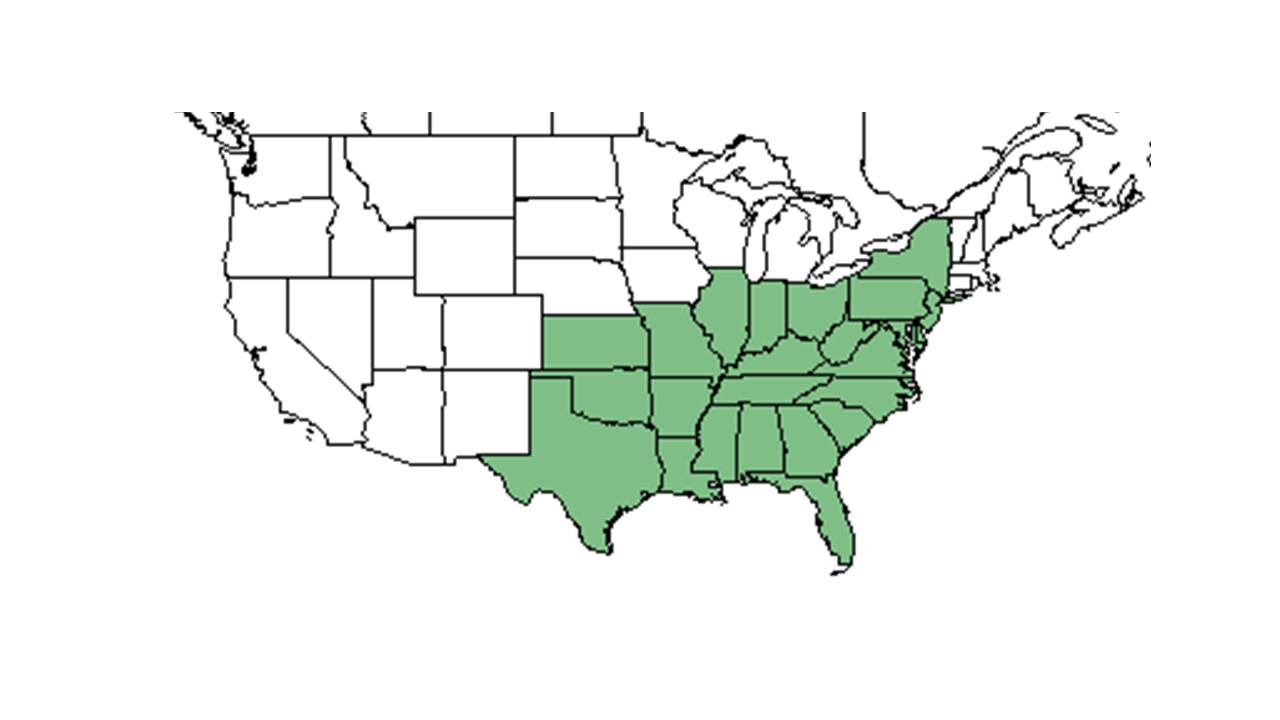Difference between revisions of "Galactia volubilis"
(→Description) |
|||
| Line 25: | Line 25: | ||
==Ecology== | ==Ecology== | ||
===Habitat=== <!--Natural communities, human disturbed habitats, topography, hydrology, soils, light, fire regime requirements for removal of competition, etc.--> | ===Habitat=== <!--Natural communities, human disturbed habitats, topography, hydrology, soils, light, fire regime requirements for removal of competition, etc.--> | ||
| + | This species is found in mixed hardwood forests, pinewoods, shrub and herb dominated communities, old fields, ravine dissected areas, dry pocosins, flatwoods, creek banks and savannahs (FSU Herbarium). It has been observed to grow in dry and moist sandy loam in open areas with full sunlight (FSU Herbarium). | ||
| + | |||
===Phenology=== <!--Timing off flowering, fruiting, seed dispersal, and environmental triggers. Cite PanFlora website if appropriate: http://www.gilnelson.com/PanFlora/ --> | ===Phenology=== <!--Timing off flowering, fruiting, seed dispersal, and environmental triggers. Cite PanFlora website if appropriate: http://www.gilnelson.com/PanFlora/ --> | ||
“A lavender-flowered prostrate perennial herb frequently climbing over bushes...It is variable species and varietal forms have been described”<ref name=Graham 1941">Graham, E. H. (1941). Legumes for erosion control and wildlife. Washington, USDA </ref> | “A lavender-flowered prostrate perennial herb frequently climbing over bushes...It is variable species and varietal forms have been described”<ref name=Graham 1941">Graham, E. H. (1941). Legumes for erosion control and wildlife. Washington, USDA </ref> | ||
Revision as of 13:51, 13 July 2015
| Galactia volubilis | |
|---|---|

| |
| Scientific classification | |
| Kingdom: | Plantae |
| Division: | Magnoliophyta - Flowering plants |
| Class: | Magnoliopsida – Dicotyledons |
| Order: | Fabales |
| Family: | Fabaceae ⁄ Leguminosae |
| Genus: | Galactia |
| Species: | G. volubilis |
| Binomial name | |
| Galactia volubilis (L.) Britton | |

| |
| Natural range of Galactia volubilis from USDA NRCS Plants Database. | |
Contents
Description
Common Name: downy milkpea
Distribution
“…occurring in sandy soils from New York to Florida westward to Tennessee and Texas.”[1]
Ecology
Habitat
This species is found in mixed hardwood forests, pinewoods, shrub and herb dominated communities, old fields, ravine dissected areas, dry pocosins, flatwoods, creek banks and savannahs (FSU Herbarium). It has been observed to grow in dry and moist sandy loam in open areas with full sunlight (FSU Herbarium).
Phenology
“A lavender-flowered prostrate perennial herb frequently climbing over bushes...It is variable species and varietal forms have been described”[1]
Seed dispersal
Seed bank and germination
Fire ecology
The amount of G. volubilis decreased after a spring burn, summer burn, and in the control plot[2] “Results from previous studies[3] indicate that leguminous plants and seed respond best to “hot” f i r e s - - i . e., those in which a high proportion of the ground fuel is consumed. Laboratory tests[4] have also shown that seed from several leguminous species germinate best after scarification with moist heat at temperatures near 80” C., a situation requiring a hot fire. The response of the leguminous plants and seed in this study, therefore, would probably have been greater if the pine stands had been burned with more intense fires. Nevertheless, further work will be necessary before we can make final conclusions about the value of prescribed burning to quail and other wildlife in the 2.5 million acres of pine in the South Carolina Piedmont.”[2] G. volubilis had the greatest coverage on the January-burned plots in the loblolly-shortleaf pine communities of the Alabama upper coastal plain.[5]
Pollination
Use by animals
Eastern mourning dove includes G. volubilis in its diet.[1]
Diseases and parasites
Conservation and Management
Cultivation and restoration
Photo Gallery
References and notes
- ↑ 1.0 1.1 1.2 Graham, E. H. (1941). Legumes for erosion control and wildlife. Washington, USDA
- ↑ 2.0 2.1 Cushwa, C. T., M. Hopkins, et al. (1970). Response of legumes to prescribed burns in loblolly pine stands of the South Carolina Piedmont. Asheville, NC, USDA Forest Service, Research Note SE-140: 6.
- ↑ Cushwa, C. T., Czuhai, Eugene, Cooper, R. W., and Julian, W. H. 1969. Burning clearcut openings in Ioblolly pine to improve wildlife habitat. Ga. Forest Res. Count. Res. Pap. 61, 5 pp. Cushwa, C. T. and Redd, J. B. 1966. One prescribed burn and its effects on habitat of the Powhatan Game Management Area. Southeast. Forest Exp. %a., U. S. Forest Serv. Res. Note SE-61, 2 pp.
- ↑ Cushwa, C. T., Martin, R. E., and Miller, R. L. 1968. The effects of fire on seed germination. J. Range Manage. 21: 250-254. M a r t i n , R . E., a n d C u s h w a , C . T. 1966. Effects of heat and moisture on leguminous seed. Fifth Annu. Tall Timbers Fire Ecol. Conf. Proc. 1966: 159-175.
- ↑ Moore, W. H. (1958). "Effects of certain prescribed fire treatments on the distribution of some herbaceous quail food plants in loblolly-shortleaf pine communities of the Alabama upper coastal plain." Proceedings of the Annual Conference of the Southeastern Association of Game and Fish Commissioners 11: 349-351.